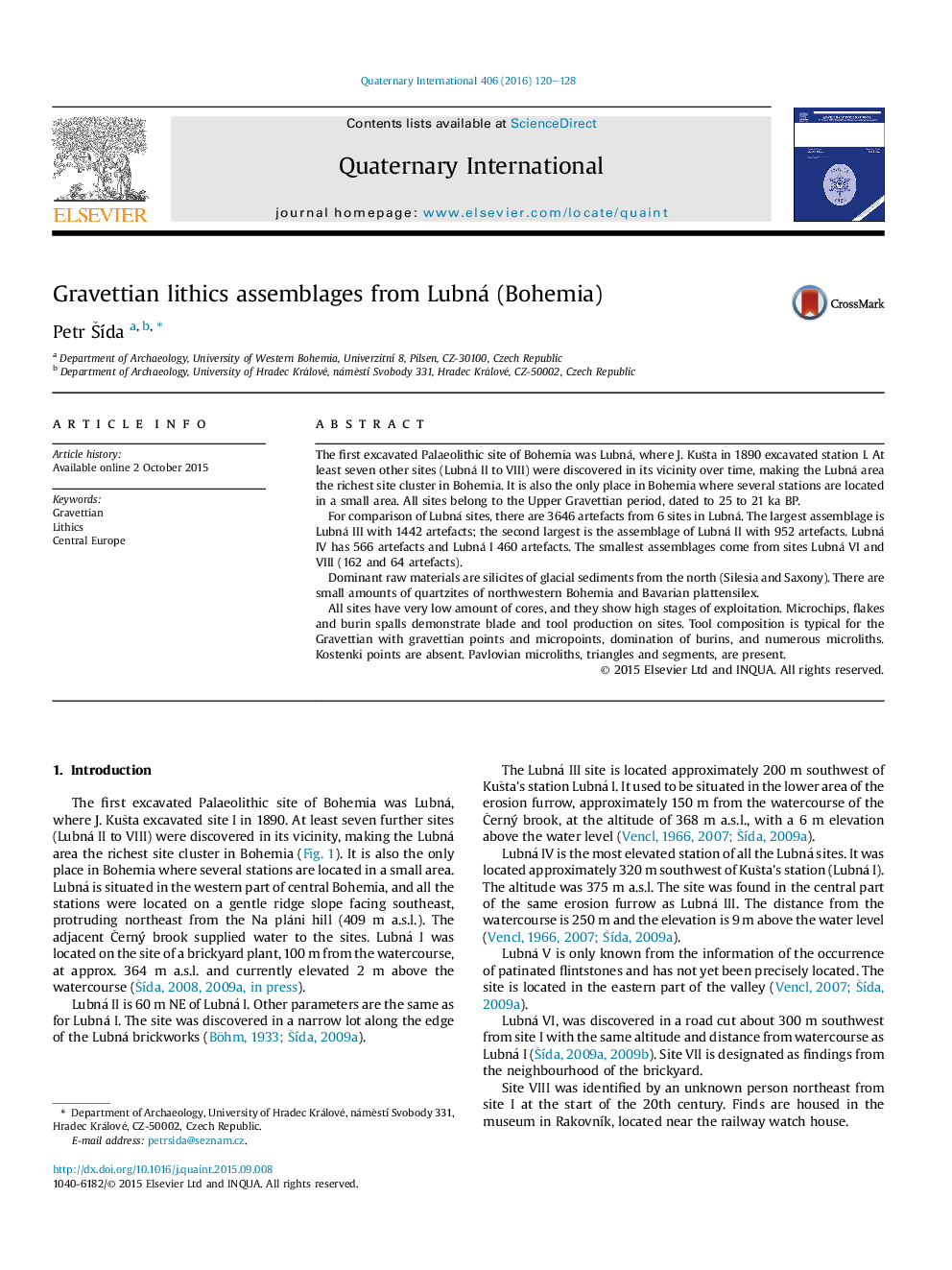| کد مقاله | کد نشریه | سال انتشار | مقاله انگلیسی | نسخه تمام متن |
|---|---|---|---|---|
| 1039971 | 944445 | 2016 | 9 صفحه PDF | دانلود رایگان |
The first excavated Palaeolithic site of Bohemia was Lubná, where J. Kušta in 1890 excavated station I. At least seven other sites (Lubná II to VIII) were discovered in its vicinity over time, making the Lubná area the richest site cluster in Bohemia. It is also the only place in Bohemia where several stations are located in a small area. All sites belong to the Upper Gravettian period, dated to 25 to 21 ka BP.For comparison of Lubná sites, there are 3646 artefacts from 6 sites in Lubná. The largest assemblage is Lubná III with 1442 artefacts; the second largest is the assemblage of Lubná II with 952 artefacts. Lubná IV has 566 artefacts and Lubná I 460 artefacts. The smallest assemblages come from sites Lubná VI and VIII (162 and 64 artefacts).Dominant raw materials are silicites of glacial sediments from the north (Silesia and Saxony). There are small amounts of quartzites of northwestern Bohemia and Bavarian plattensilex.All sites have very low amount of cores, and they show high stages of exploitation. Microchips, flakes and burin spalls demonstrate blade and tool production on sites. Tool composition is typical for the Gravettian with gravettian points and micropoints, domination of burins, and numerous microliths. Kostenki points are absent. Pavlovian microliths, triangles and segments, are present.
Journal: Quaternary International - Volume 406, Part A, 25 June 2016, Pages 120–128
